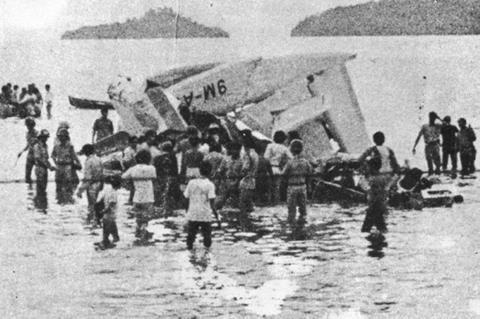Malaysia has declassified the final report into the 1976 crash of a GAF Nomad N22B that killed several local politicians, pointing to loading errors and airmanship issues.
The crash occurred 15:42 local time on 6 June 1976 as the Sabah Air Aviation turborpop (9M-ATZ) made its final approach to Kota Kinabalu’s runway 20, following a 30min flight from the Malaysian island of Labuan, according to the Civil Aviation Department report.

Weather conditions were clear at the time of the crash, which killed all 10 passengers and the pilot.
The aircraft and another Nomad (9M-AUA) had been chartered to carry a group of senior politicians from Labuan to Kota Kinabalu, the state capital of Malaysia’s Sabah province on the island of Borneo.
On 6 June, the aircraft and its pilot had conducted two return flights to Kinabalu before the accident flight, the first departing Labuan at 06:35 and the second at 13:10. Before the second return to Labuan, the pilot complained of stomach pain, possibly from a meal the previous evening.
During the accident flight, the tower controller saw 9M-ATZ conduct a normal base leg and start its final approach. When the controller gave final clearance to land, the pilot gave no response. Seven seconds later the pilot failed to reply to a second clearance.
“Almost immediately, the controller observed the right wing of the aircraft dip momentarily and then rise to a level position after which the aircraft entered a spin to the right during which height was lost.”
Eyewitnesses claimed that the aircraft “recovered momentarily in a nose down attitude”, but then resumed its spin to the right. The aircraft crashed in 2ft of water in a “steep nose down attitude.”
The accident aircraft was not required to carry recorders, but after examining the wreckage, the investigation team concluded that the aircraft’s rear baggage compartment had been overloaded, affecting the aircraft’s centre of gravity.
Specifically, as the pilot deployed the flaps for landing and the aircraft nosed up, the incorrect centre of gravity meant that the control column could not move forward past its stop position.
“If the forward stop is reached when the nose of the aircraft is still moving up, then a loss of control must occur because airspeed and stability are lost,” says the report. “The point at which the control column meets the stop is a result of power, flap setting, centre of gravity position, and airspeed.”
The report also observes that in addition to feeling ill the pilot was probably fatigued after a very early start in the morning. Moreover, the pilot and the carrier had a poor procedural record.
“It is quite obvious that many of the procedures listed in the operations manual have not been used by the pilots,” says the report. “In addition, technical log entries were of such a poor standard as to make the document meaningless.”
The report also suggests that the pilot, before departing Labuan, was “oblivious to [the] incorrect distribution of the load.”
The report found no faults with the aircraft. Cirium fleets data reports that the aircraft was delivered in November 1975.


























